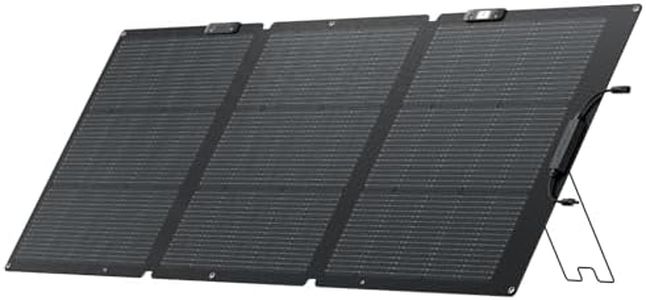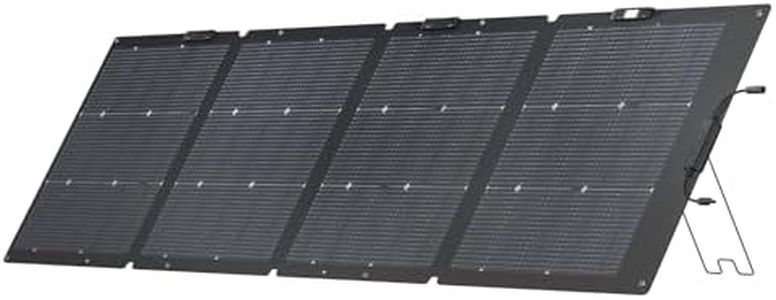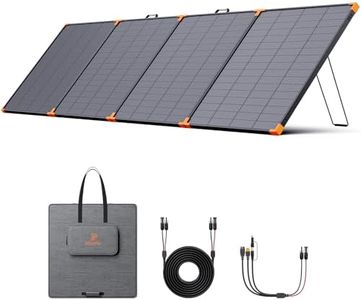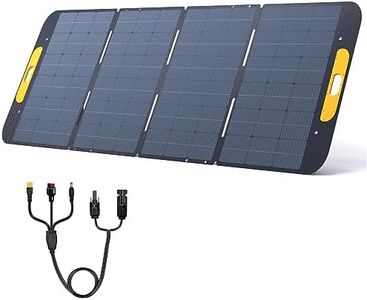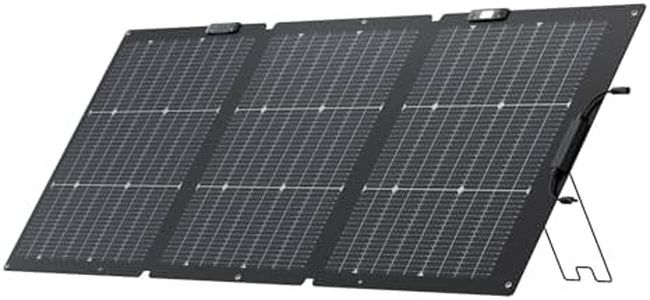We Use CookiesWe use cookies to enhance the security, performance,
functionality and for analytical and promotional activities. By continuing to browse this site you
are agreeing to our privacy policy
10 Best Portable Rv Solar Panels
From leading brands and best sellers available on the web.Buying Guide for the Best Portable Rv Solar Panels
When looking to buy portable RV solar panels, it's important to focus on how you plan to use them, where you'll be traveling, and what kinds of electrical devices you want to power. Think about how much sunlight your typical destinations receive and consider your mobility needs—do you want something easy to carry and set up each day, or are you seeking a semi-permanent system? Portable solar panels can make RV life more independent and eco-friendly, but finding the right type ensures you get enough power without unnecessary hassle or wasted capacity.Wattage (Power Output)Wattage tells you how much electrical power the panel can generate under ideal sunlight. This is crucial because higher wattage means more ability to charge batteries or run appliances. Panels come in lower wattages (around 50-100W), mid-range (120-200W), and high wattages (over 200W). If you only need to charge phones or small lights, lower wattage works. For running fridges, laptops, or more, aim for mid to high. Consider what you usually run in your RV and check the combined watt requirements for a proper match.
Panel Type (Monocrystalline vs. Polycrystalline vs. Thin Film)Solar panel type refers to the material used and its efficiency. Monocrystalline panels are the most efficient and work best in limited space, while polycrystalline are slightly less efficient but usually more affordable. Thin film panels are very lightweight and flexible but generally require more space for the same output. If you have limited roof or ground space, choose monocrystalline; if you’re flexible on space and want something lightweight, thin film might suit you.
Portability (Weight and Size)Portability describes how easy the panel is to handle, carry, and set up. Some panels fold like a suitcase, some are rigid, and others are flexible. Lightweight, compact panels are ideal if you move frequently or have limited storage in your RV. If you plan to set up once and leave it, larger and heavier panels may work. Evaluate your storage capacity and how often you'll need to move the panel to decide what’s best for you.
Charging Compatibility (Controller and Output Options)Charging compatibility means what kind of batteries or devices you can charge directly from the panel, and whether the kit includes a charge controller to protect from overcharging. Some panels are plug-and-play with built-in controllers, making them very easy to use, while others require separate controllers or setup. Make sure the panel matches your RV’s battery type (like AGM, gel, or lithium) and has the right connections for your gear.
Durability and Weather ResistanceDurability is about how well the panel stands up to outdoor use, including rain, dust, and the occasional bump or drop. Look for features like water-resistant or waterproof ratings, sturdy frames, and strong materials. If you’re a full-time RVer or travel in harsh climates, choose a highly durable, weatherproof model. For occasional weekend getaways in mild conditions, a lighter and less rugged panel might be all you need.

